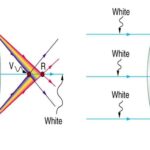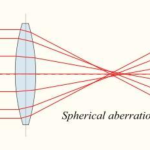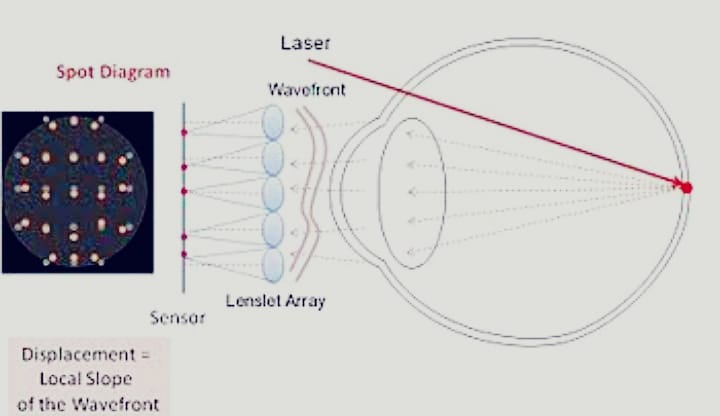Vision is one of the most complex and fascinating senses in the human body. However,
not everyone experiences perfect clarity when they open their eyes. Many people
struggle with blurry vision, making everyday tasks like reading, driving, or even
recognizing faces difficult. But what causes this distortion? One of the lesser-known yet
crucial reasons behind blurry vision is optical aberration.
In this blog, we’ll dive into the mystery of blurry vision, explore the science behind
optical aberrations, and understand how they impact what we see.
Understanding Blurry Vision
Blurry vision occurs when the eyes cannot focus light properly onto the retina, the part
of the eye that sends signals to the brain. When light is scattered or misdirected, the
brain receives unclear images, leading to vision distortion. While common refractive
errors like myopia (nearsightedness), hyperopia (farsightedness), and astigmatism are
well-known causes, optical aberrations are another significant factor affecting vision.
What Are Optical Aberrations?
Optical aberrations are imperfections in the way light is bent (refracted) as it passes
through the eye. These imperfections cause visual distortions that make objects appear
blurred, stretched, or doubled. Unlike common refractive errors that can be corrected
with glasses or contact lenses, aberrations are more complex and can cause difficulties
even with corrective lenses.
Types of Optical Aberrations
Optical aberrations can be categorized into two main types:
1. Lower-Order Aberrations
These include common refractive errors that most people experience:
Myopia (Nearsightedness): Objects close to the eyes appear clear, but distant objects
appear blurry because light focuses in front of the retina.
Hyperopia (Farsightedness): Distant objects may appear clear, but near objects are
blurry because light focuses behind the retina.
Astigmatism: A condition where the cornea or lens is irregularly shaped, causing light to
scatter unevenly, leading to distorted or blurry vision.
These can be corrected with prescription glasses, contact lenses, or laser eye surgery.
2. Higher-Order Aberrations
These are more complex distortions that cannot be corrected with standard glasses or
contacts. They arise due to irregularities in the cornea or lens. Some common higher-
order aberrations include:
Spherical Aberration: Light rays entering the eye at different points do not focus at the
same spot, causing halos and glare, especially at night.
Coma Aberration: Objects appear to have a tail or streak, similar to a comet, due to
asymmetrical light refraction.
Trefoil and Tetrafoil Aberrations: These distortions cause complex blurring, leading to
starburst patterns or wavy vision.
These aberrations often become noticeable in low-light conditions or after eye surgeries
such as LASIK.
How Aberrations Affect Vision
Optical aberrations distort the way we see the world in different ways. Some common
effects include:
1. Halos and Glare
People with spherical aberration often experience halos around lights at night. This
makes night driving particularly challenging. Streetlights, headlights, and neon signs can
appear to have glowing rings around them, making it hard to judge distances.
2. Double Vision and Ghosting
Coma aberration can create a ghosting effect, where objects appear to have a shadow
or double image. This can make reading and recognizing faces difficult.
3. Poor Contrast Sensitivity
Some aberrations reduce the ability to see details clearly, especially in dim lighting.
Even if the vision appears clear during the day, it may become blurry at night or in foggy
conditions.
4. Starburst Patterns
Certain aberrations cause light sources to appear as starbursts, where bright lines
radiate outward. This can be particularly distracting when looking at streetlights or digital
screens.
5. Distorted Perception of Shapes and Sizes
Higher-order aberrations can cause objects to appear stretched, compressed, or wavy.
This can make it difficult to judge distances, which is crucial for activities like driving or
playing sports.
Causes of Optical Aberrations
Several factors contribute to optical aberrations, including:
1. Irregular Cornea or Lens Shape
If the cornea or lens is not perfectly smooth, light does not refract evenly. This can be
due to genetics or eye diseases like keratoconus, which causes the cornea to thin and
bulge outward.
2. Eye Surgeries
Procedures like LASIK or cataract surgery can sometimes lead to aberrations. If the
corneal reshaping is not perfectly smooth, it may create irregular refractions.
3. Pupil Size
Larger pupils allow more peripheral light to enter the eye, increasing the chances of
aberrations, especially in dim light.
4. Aging and Eye Conditions
As we age, the lens of the eye can develop irregularities, leading to increased
aberrations. Cataracts, for example, scatter light and create blurry or cloudy vision.
Diagnosing Optical Aberrations
Standard eye exams primarily detect lower-order aberrations like nearsightedness and
astigmatism. However, diagnosing higher-order aberrations requires advanced
technology such as:
Wavefront Aberrometry: A specialized device that maps out how light travels through
the eye, detecting any distortions.
Corneal Topography: This test creates a detailed map of the cornea’s shape, helping to
identify irregularities.
These tests are usually performed if a person experiences persistent vision problems
despite wearing corrective lenses.
Treatment and Management of Aberrations
While traditional glasses and contact lenses correct lower-order aberrations, higher-
order aberrations require specialized approaches:
1. Custom Wavefront Lenses
Custom contact lenses or glasses designed with wavefront technology can help reduce
higher-order aberrations. These lenses are personalized to each individual’s eye shape.
2. Rigid Gas Permeable (RGP) or Scleral Lenses
These specialty lenses provide a smoother refractive surface, reducing aberrations
caused by corneal irregularities. They are commonly used for conditions like
keratoconus.
3. Advanced Laser Surgery
Custom LASIK or PRK surgeries using wavefront-guided technology can correct some
aberrations by reshaping the cornea more precisely. However, not everyone is a
candidate for these procedures.
4. Pupil-Modulating Drops
Certain eye drops can temporarily reduce pupil size, minimizing the impact of
aberrations, especially at night.
5. Avoiding Glare and Enhancing Contrast
For those affected by halos and glare, using anti-reflective coatings on glasses, wearing
polarized sunglasses, and adjusting screen brightness can help manage symptoms.
Conclusion
Blurry vision is more than just an inconvenience—it can significantly impact daily life.
While common refractive errors are well understood, optical aberrations remain a
mystery for many people. These distortions can make simple tasks challenging,
especially in low-light conditions.
Understanding the role of aberrations in vision problems can help individuals seek
appropriate diagnosis and treatment. Advances in wavefront technology, custom lenses,
and specialized surgeries offer hope for those struggling with vision distortions.
If you experience unexplained blurriness, halos, ghosting, or starbursts, consider
consulting an eye specialist for a thorough evaluation. Clear vision is not just about
seeing—it’s about experiencing the world in its full detail and vibrancy.









